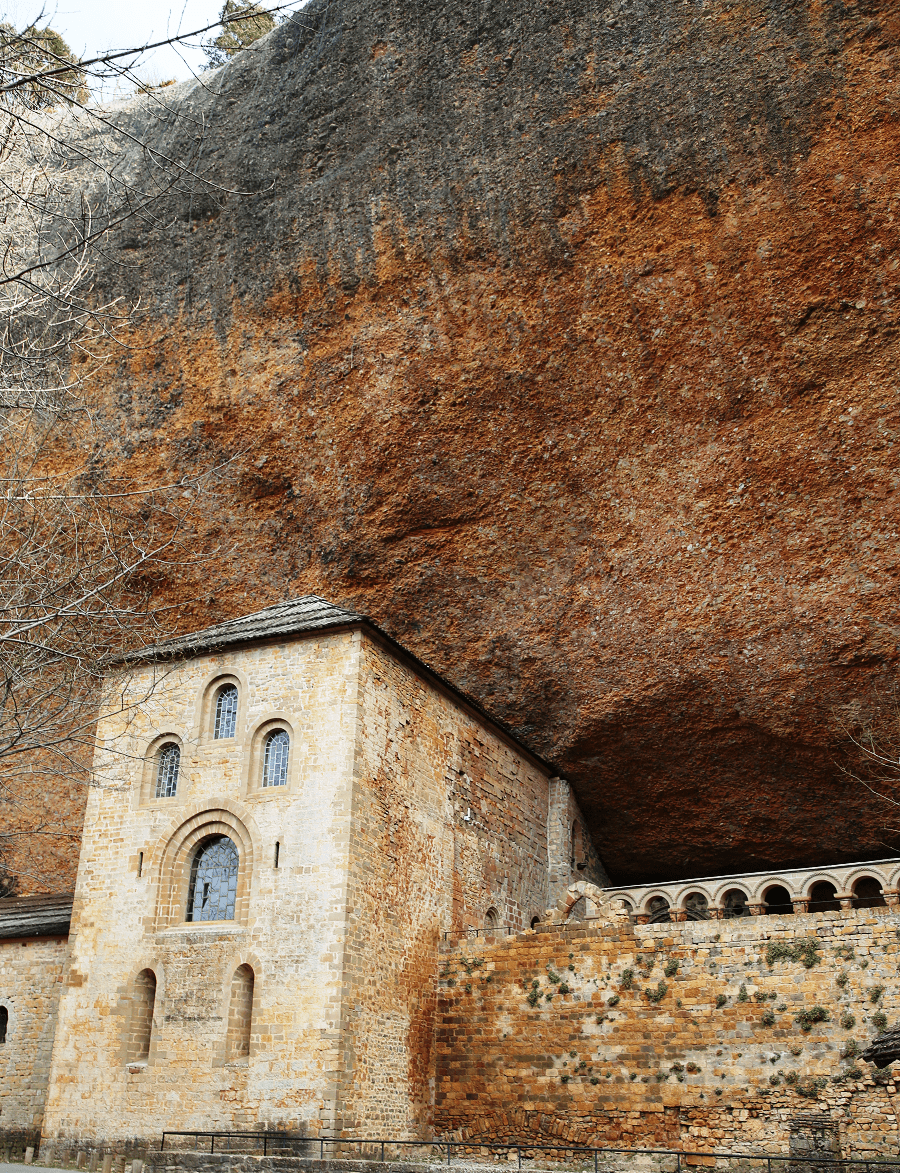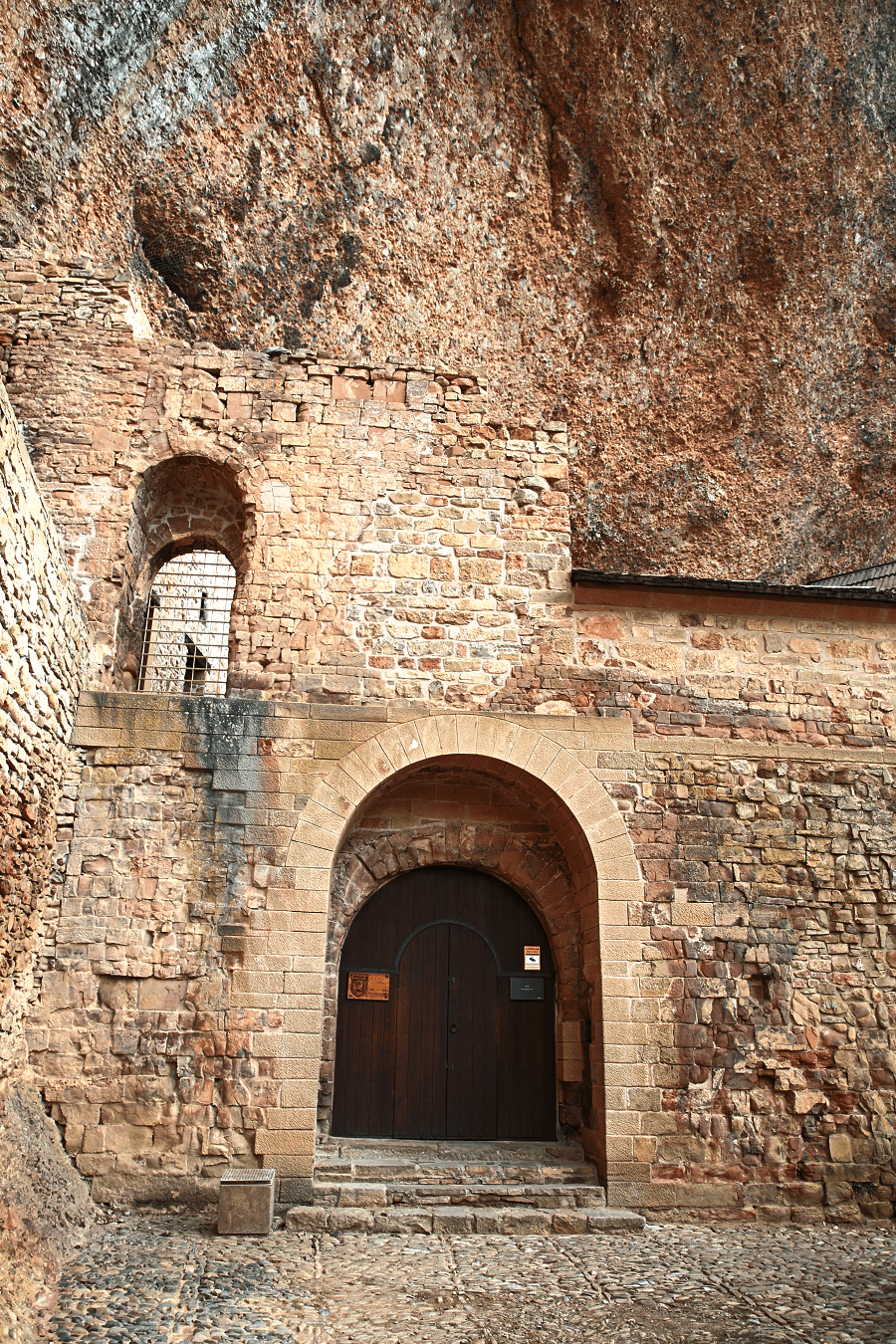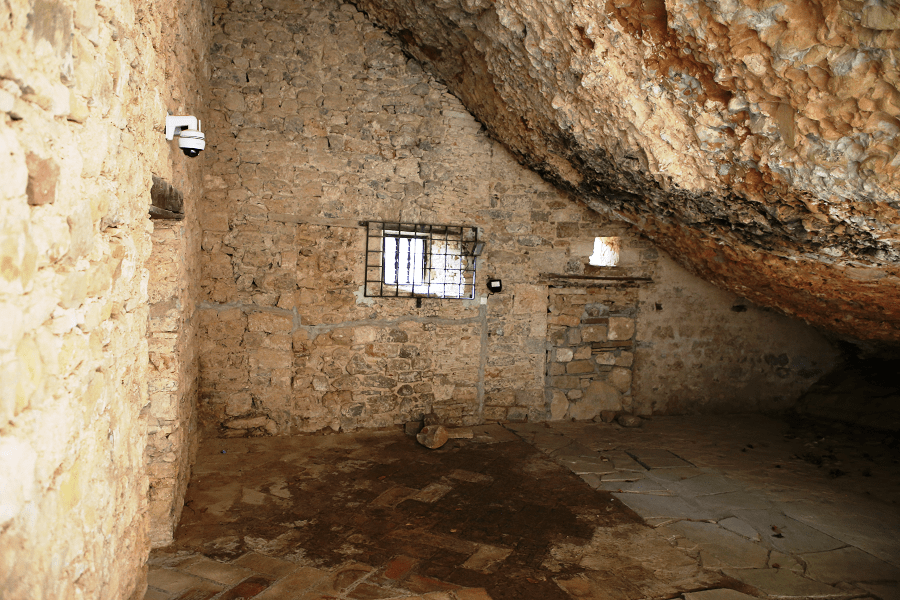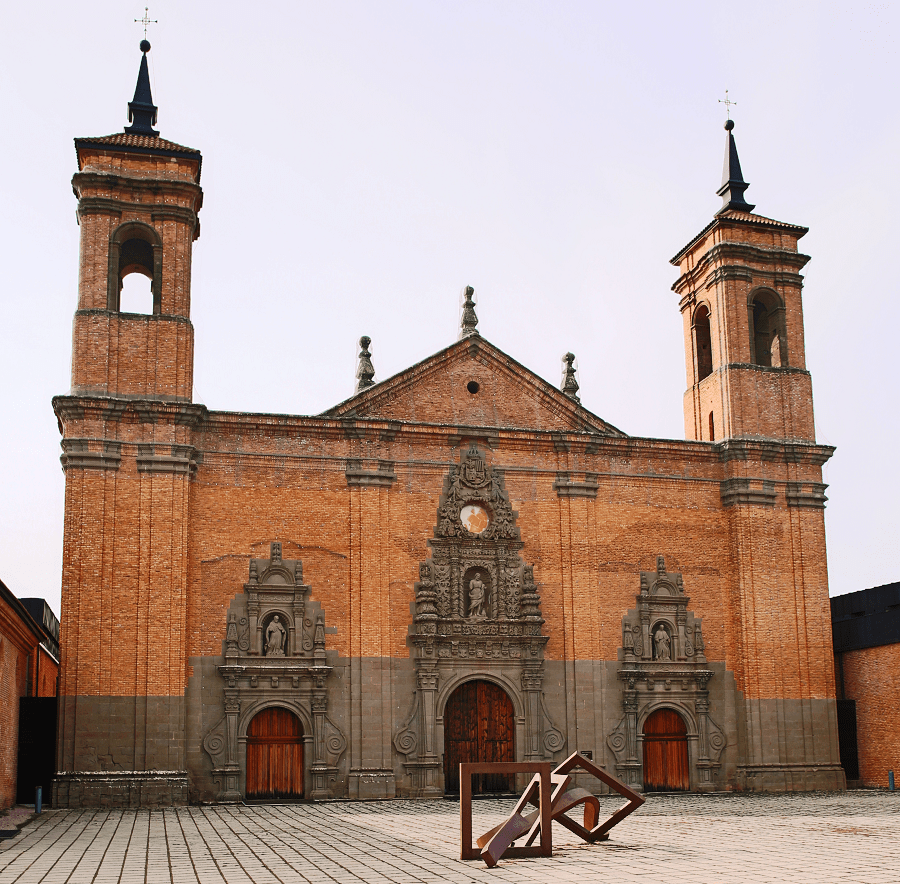The old monastery of San Juan de la Peña is a religious complex in the town of Santa Cruz de la Serós, at the south-west of Jaca, in the province of Huesca, Aragon, Spain. It was one of the most important monasteries in Aragon in the Middle Ages. Its two-level church is partially carved in the stone of the great cliff that overhangs the foundation. San Juan de la Peña means “Saint John of the Cliff”.
It is part of the Aragonese way of the Camino de Santiago.
Its location is extremely unique. The monastery is built beneath a huge rock sometimes associated with the legendary “Monte Pano”. The second floor contains a royal pantheon of kings of Aragon and Navarre.
The lower church includes some mozarabic architectural surviving elements, although most of the parts of the monastery (including the impressive cloister, under the great rock) are Romanesque.
After the fire of 1675, a new monastery was built. The old monastery (built in 920) was declared a National Monument on 13 July 1889, and the new monastery in 1923. In the 11th century the monastery became part of the Benedictine Order and was the first monastery in Spain to use the Latin Mass.
The cloister, built in 1190, contains a series of capitals with Biblical scenes that originally were arranged in chronological sequence, a design found elsewhere in the region.
The new Monastery of San Juan de la Peña (five minutes by car to the ast), was built after the terrible fire of 1675. It was designed by the Zaragoza architect Miguel Ximenez, and construction began in 1676 in the Llano de San Indalecio, extending the works until the beginning of the 19th century.
Although its layout is one of the most admirable examples of the monastic architecture of the Modern Age, it was never completely finished.
The façade of the church stands out with an exuberant vegetal decoration with scrolls, flowers. Saint John the Baptist is depicted on the central portal, Saint Indalecio on the left, and Saint Benedict, founder of the order, on the right.
In 1835 the rooms were abandoned and unfortunately, as in so many others, the building began to deteriorate, leaving it in a state of ruin.
The government of Aragon, after extensive rehabilitation, has managed to house the Interpretation Center of the Monastery of San Juan de la Peña. And it also houses the Interpretation Center of the Kingdom of Aragon, with panels and an audiovisual with the keys to the origin of the Kingdom and the Crown of Aragon. A Hospedería (four-star hotel) completes the set.
How to get to?
From Huesca 1 hr 18 min (94.1 km) via A-23
From Zaragoza 1 hr 58 min (161 km) via A-23
From Madrid 4 hr 48 min (477 km) via A-2




















